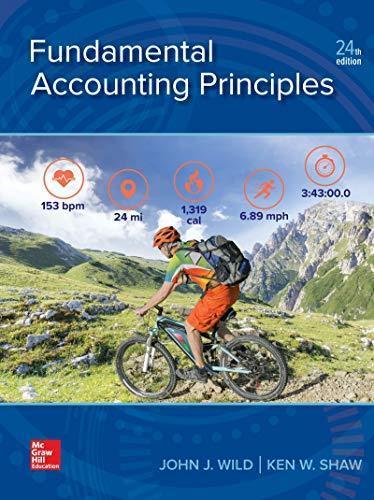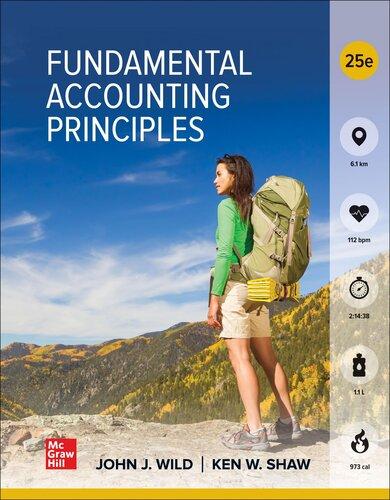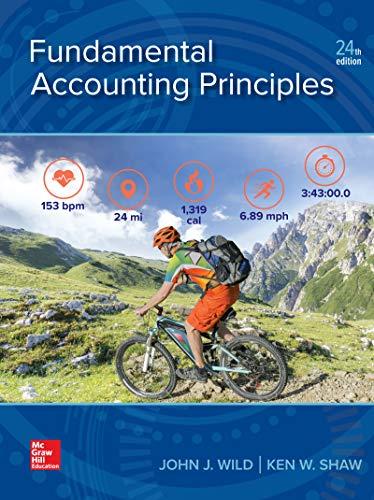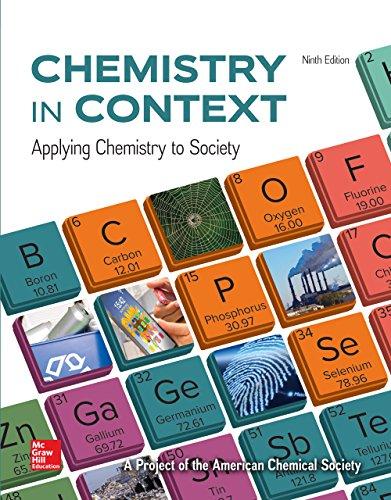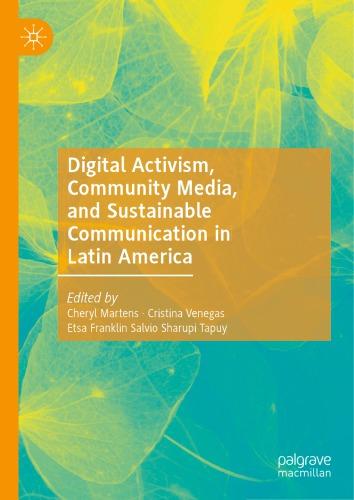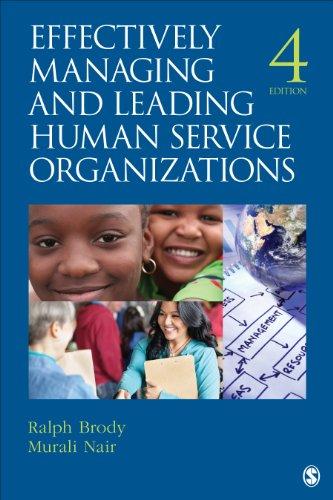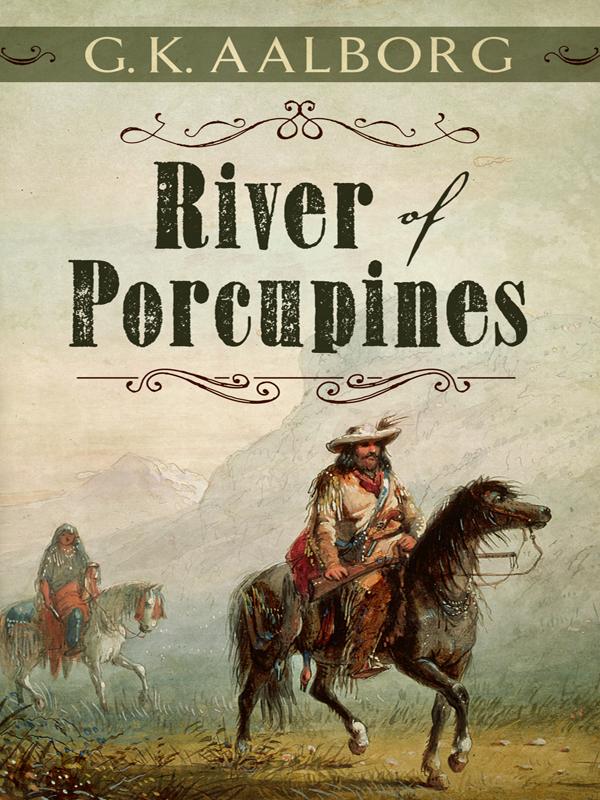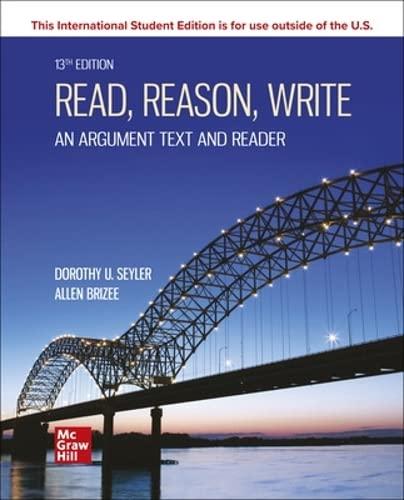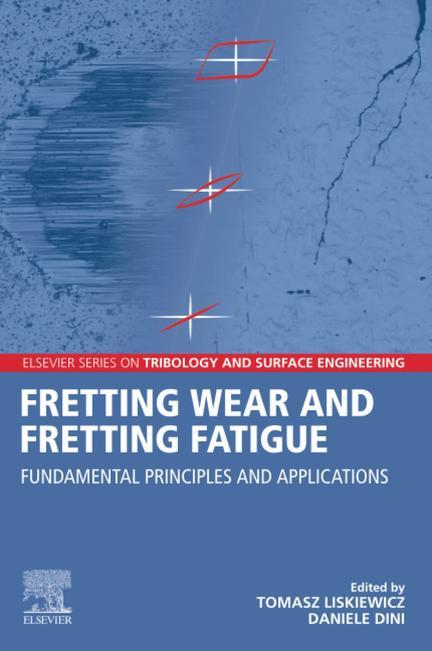FrettingWearandFrettingFatigue
FundamentalPrinciplesandApplications
Editedby TomaszLiskiewicz DanieleDini
Elsevier
Radarweg29,POBox211,1000AEAmsterdam,Netherlands TheBoulevard,LangfordLane,Kidlington,OxfordOX51GB,UnitedKingdom 50HampshireStreet,5thFloor,Cambridge,MA02139,UnitedStates
Copyright©2023ElsevierInc.Allrightsreserved.
Nopartofthispublicationmaybereproducedortransmittedinanyformorbyanymeans,electronic ormechanical,includingphotocopying,recording,oranyinformationstorageandretrievalsystem, withoutpermissioninwritingfromthepublisher.Detailsonhowtoseekpermission,further informationaboutthePublisher’spermissionspoliciesandourarrangementswithorganizationssuch astheCopyrightClearanceCenterandtheCopyrightLicensingAgency,canbefoundatourwebsite: www.elsevier.com/permissions.
Thisbookandtheindividualcontributionscontainedinitareprotectedundercopyrightbythe Publisher(otherthanasmaybenotedherein).
Notices
Knowledgeandbestpracticeinthisfieldareconstantlychanging.Asnewresearchandexperience broadenourunderstanding,changesinresearchmethods,professionalpractices,ormedicaltreatment maybecomenecessary.
Practitionersandresearchersmustalwaysrelyontheirownexperienceandknowledgeinevaluating andusinganyinformation,methods,compounds,orexperimentsdescribedherein.Inusingsuch informationormethodstheyshouldbemindfuloftheirownsafetyandthesafetyofothers,including partiesforwhomtheyhaveaprofessionalresponsibility.
Tothefullestextentofthelaw,neitherthePublishernortheauthors,contributors,oreditors,assume anyliabilityforanyinjuryand/ordamagetopersonsorpropertyasamatterofproductsliability, negligenceorotherwise,orfromanyuseoroperationofanymethods,products,instructions,orideas containedinthematerialherein.
ISBN:978-0-12-824096-0
ForinformationonallElsevierpublications visitourwebsiteat https://www.elsevier.com/books-and-journals
Publisher: MatthewDeans
AcquisitionsEditor: DennisMcGonagle
EditorialProjectManager: JoshuaMearns
ProductionProjectManager: PoulouseJoseph
CoverDesigner: ChristianBilbow
TypesetbySTRAIVE,India
Contributors
MagdAbdelWahab LaboratorySoete,FacultyofEngineeringandArchitecture, GhentUniversity,Ghent,Belgium
JoseAlexanderArau ´ jo DepartmentofMechanicalEngineering—ENM,Facultyof Technology—FT,UniversityofBrası´lia—UnB,Brası´lia,Brazil
M.HelmiAttia AerospaceManufacturingTechnologyCenter,Institutefor AerospaceResearch,NationalResearchCouncilofCanada,Ottawa,ON;Mechanical EngineeringDepartment,McGillUniversity,Montreal,QC,Canada
AndrewR.Beadling InstituteofFunctionalSurfaces,SchoolofMechanical Engineering,UniversityofLeeds,Leeds,UnitedKingdom
BenD.Beake ApplicationsDevelopment,MicroMaterialsLtd,Wrexham,Wales, UnitedKingdom
AliBeheshti DepartmentofMechanicalEngineering,GeorgeMasonUniversity, Fairfax,VA,UnitedStates
NadeemAliBhatti LaboratorySoete,FacultyofEngineeringandArchitecture, GhentUniversity,Ghent,Belgium
MichaelG.Bryant InstituteofFunctionalSurfaces,SchoolofMechanical Engineering,UniversityofLeeds,Leeds,UnitedKingdom
Fa ´ bioComesCastro DepartmentofMechanicalEngineering—ENM,Facultyof Technology—FT,UniversityofBrası´lia—UnB,Brası´lia,Brazil
AdrianConnaire Woodplc,Parkmore,Galway,Ireland
PascaleCorne MinesSaint-Etienne,Saint-Etienne,France
IandeMedeirosMatos DepartmentofMechanicalEngineering—ENM,Facultyof Technology—FT,UniversityofBrası´lia—UnB,Brası´lia,Brazil
DanieleDini ImperialCollegeLondon,FacultyofEngineering,Departmentof MechanicalEngineering,London,UnitedKingdom
JaimeDomı ´ nguez UniversidaddeSevilla,Sevilla,Spain
JorgeLuizDeAlmeidaFerreira DepartmentofMechanicalEngineering—ENM, FacultyofTechnology—FT,UniversityofBrası´lia—UnB,Brası´lia,Brazil
SiegfriedFouvry LTDS,EcoleCentraledeLyon,Ecully,France
JeanGeringer MinesSaint-Etienne,Saint-Etienne,France
AntoniosE.Giannakopoulos MechanicsDivision,NationalTechnicalUniversityof Athens,Athens,Greece
AnnetteM.Harte RyanInstituteforMarine,EnergyandEnvironment; CivilEngineering,SchoolofEngineering,NUIGalway,H91HX31,Ireland
ToshioHattori GifuUniversity,Gifu-City,Japan
DavidA.Hills DepartmentofEngineeringScience,UniversityofOxford,Oxford, UnitedKingdom
IlkwangJang SchoolofMechanicalEngineering,YonseiUniversity,Seoul, RepublicofKorea
YongHoonJang SchoolofMechanicalEngineering,YonseiUniversity,Seoul, RepublicofKorea
RachelJanuszewski DepartmentofMechanicalEngineering,ImperialCollege London,London,UnitedKingdom
MurugesanJayaprakash DepartmentofMetallurgyandMaterialsEngineering, IndianInstituteofTechnologyIndore,Indore,India
HyeonggeunJo SchoolofMechanicalEngineering,YonseiUniversity,Seoul, RepublicofKorea
AmirKadiric DepartmentofMechanicalEngineering,ImperialCollegeLondon, London,UnitedKingdom
RemyBadibangaKalombo DepartmentofMechanicalEngineering—ENM,Faculty ofTechnology—FT,UniversityofBrası´lia—UnB,Brası´lia,Brazil
ChaosuanKanchanomai DepartmentofMechanicalEngineering,Facultyof Engineering,ThammasatUniversity,Pathumthani,Thailand
ThawhidKhan ManchesterMetropolitanUniversity,FacultyofScienceand Engineering,DepartmentofEngineering,Manchester,UnitedKingdom
MichaelM.Khonsari DepartmentofMechanicalandIndustrialEngineering, LouisianaStateUniversity,BatonRouge,LA,UnitedStates
KrzysztofJ.Kubiak SchoolofMechanicalEngineering,UniversityofLeeds,Leeds, UnitedKingdom
Sea ´ nB.Leen MechanicalEngineering,SchoolofEngineering;RyanInstitutefor Marine,EnergyandEnvironment,NUIGalway,H91HX31;I-FormCentrefor AdvancedManufacturing,Ireland
TomaszLiskiewicz ManchesterMetropolitanUniversity,FacultyofScienceand Engineering,DepartmentofEngineering,Manchester,UnitedKingdom
YanfeiLiu BeijingInstituteofTechnology,SchoolofMechanicalEngineering, Beijing,China
TaisukeMaruyama CoreTechnologyR&DCenter,NSKLtd.,Tokyo,Japan
ThomasG.Mathia LTDS,EcoleCentraledeLyon,Ecully,France
AllanMatthews UniversityofManchester,Manchester,UnitedKingdom
MatthewR.Moore DepartmentofPhysics&Mathematics,UniversityofHull, Kingston-Upon-Hull;MathematicalInstitute,UniversityofOxford,Radcliffe ObservatoryQuarter,Oxford,UnitedKingdom
YoshiharuMutoh DepartmentofSystemSafety,NagaokaUniversityofTechnology, Nagaoka,Niigata,Japan
CarlosNavarro UniversidaddeSevilla,Sevilla,Spain
DavidNowell DepartmentofMechanicalEngineering,ImperialCollegeLondon, SouthKensingtonCampus,London,UnitedKingdom
SineadM.O’Halloran RyanInstituteforMarine,EnergyandEnvironment,NUI Galway,H91HX31;SEAMResearchCentre,SchoolofEngineering,Waterford InstituteofTechnology,Waterford,X91TX03,Ireland
AbimbolaOladukon InstituteofFunctionalSurfaces,SchoolofMechanical Engineering,UniversityofLeeds,Leeds,UnitedKingdom
xvi Contributors
YoungwooPark LGElectronicsVehicleComponentsUSA,Troy,MI,UnitedStates
KyviaPereira LaboratorySoete,FacultyofEngineeringandArchitecture,Ghent University,Ghent,Belgium
JohnSchofield ConsultantinStructuralIntegrity,Derby,UnitedKingdom
PhilipHowardShipway FacultyofEngineering,UniversityofNottingham, Nottingham,UnitedKingdom
Jesu ´ sVa ´ zquez UniversidaddeSevilla,Sevilla,Spain
AndreyVoevodin UniversityofNorthTexas,Denton,TX,UnitedStates
AlekseyYerokhin UniversityofManchester,Manchester,UnitedKingdom
ThanasisZisis MechanicsDivision,NationalTechnicalUniversityofAthens, Athens,Greece
Preface
Appliedresearchinfrettingwearandfrettingfatiguehasgainedsignificantmomentuminrecentyears;however,thereisnosinglereferencebookcurrentlyavailablethat caneducateresearchersinacomprehensivewayonbothwearandfatigueaspectsof thefrettingphenomenon.Hence,thisbooktakesacombinedmechanicsandmaterials approach,providingreaderswithfundamentalunderstandingoffretting,related modelingandexperimentationtechniques,methodsfordesignandmitigationagainst fretting,androbustexamplesofpracticalapplicationsacrossanarrayofengineering disciplines.
Theaimofthebookwastobringtogether,systematicallyinasinglevolume,the state-of-the-artknowledgeonfretting.Thiswasachievedthroughacollaborative approachbetweentwoeditorsspecializingindifferentaspectsoffretting.Oftenrecognizedastwodistinctareasofresearch,frettingwearandfrettingfatigueare addressedinonevolumeforthefirsttime.Thiscreatesauniquesynergyandopportunitytoexpandhorizonsandlearn.
Weassembledthebestexpertsinthefieldtocontributetothisproject,manyof whomaremembersoftheInternationalSymposiumonFrettingFatigue(ISFF)community.Webelievethatthisbookcanbeakeyreferenceforstudentsandscholars fromdiversescienceandengineeringbackgroundssuchasthosefrommechanical engineering,materialsscience,structuraldesign,andmanymore.Wehopethebook willalsobeofusetopractitionersandengineerswhofrequentlyencounterfrettingrelatedproblems,andwhorequiretimely,butadequatesolutions.
Wetriedtopresentthecontentsinalogical,easilyassimilatedmanner.Thisbook containsfivesectionswrittencarefullytocoverthefundamentalaspectsaswellasthe keytheoreticaldevelopmentsandexperimentalmethodologiesassociatedwithfrettingwearandfrettingfatigue.Thefirstsectionofthisbookintroducesthereader tothehistoricalaspectsoffretting,providingausefulstartingpointandbackground totherestofthebook.Thesecondsectiondiscussestheunderpinningbasictheories, providingagoodintroductiontothesubjecttoanylearnernewtofretting.Thethird andfourthsectionsofthebookpresentcontributionsthatcoverdifferentfacetsand provideacompletein-depthunderstandingoffrettingwearandfrettingfatigue, respectively.Thesubsequentsevenchaptersinsectionfiveofthebookarededicated tothestudiesofsomeofthemainapplicationswhereunderstandingoffrettingphenomenacontributestoimprovedengineeringdesignandpractice.
Thisbookismeanttobeanactivesourceofreference,whichareadercanflip throughtofindusefulguidanceonspecifictopicswhenthereisaneedforsome perspectiveoradvice.Thefundamentalsoffrettingarecoveredinsectiontwo;however,whenitisimportantforthecontext,somebasictheoriesarealsodiscussedinthe subsequentchapters.Therewillbesomedegreeofrepetitionbetweenthechapters,
whichresultsfromthefactthateverychapterisastand-alonecontributionmeantto provideafullunderstandingofagiventopic.Thereaderisalsoadvisedtopayattentiontothenomenclatureusedbythecontributors,asthismightdifferbetweenthe chapters.Weacceptedthisfact,asitspansfromcommonpracticeinafield approachedbyscientistsfromdifferentbackgrounds,anddidnottrytomanipulate thenomenclature,asanyattempttocreateafrettingunifiedglossaryandlistofsymbolswouldbeuntruetothefieldandcouldcauseadegreeofconfusion.
Theeditorsarethankfultoallcontributingauthorsforagreeingtobeapartofthis project.ThisisespeciallyappreciatedasthebookwaseditedduringtheCOVID-19 globalpandemic,whenallofuswerepresentedwithunprecedentedcircumstances andchallenges.Wealsothankcolleaguesandassociatesworldwidewhohaveoffered helpfulcommentsandsuggestionsforimprovementofthetext.Inparticular,we acknowledgesupportandencouragementfromourfamiliesintheprocessofcompletingthisbook.
DanieleDini
ManchesterandLondon
June2022
TomaszLiskiewicz
1.2Initialmilestonesintheunderstanding ofthemechanicsoffretting
Althoughitwasnotalwaysrecognizedinthesetermsatthetime,manyofusnow thinkofthefrettingproblemasbeingsplitintothreeparts,eachcapableofindependentstudy.Firstly,thefrettingprocessitselfinvolvesthereciprocatingmotionofone contactingsurface(orpartofonesurface)overanother.Thishasbeenthesubjectof muchmathematicalanalysissincethepioneeringworkofCattaneointhe1930s (Cattaneo,1938),rediscoveredbyMindlininthe1940s(Mindlin,1949).Secondly, thepresenceofdifferentialmotionmodifiesthesurfaces,causingwear,andmay beinstrumentalincontrollingtheconditionsunderwhichcracksnucleate.Lastly, thepresenceofcontactstresseswillhaveanimportanteffectontheearlypropagation ofcracks,untilthetipgrowsoutoftheinfluenceofthecontactstressfield.Itiseasy,in hindsight,toseethingsinthisway,butwemustrememberthatfracturemechanics itselfwasstillfarfromfullydevelopedinthe1950s,sothateventhepropagation aspectoftheproblemwasstillasubjectofstudy.The1950sarethereforethefirst goldenageforfrettingresearch,whichcoincidedwiththeboomingofthestudies inallthreekeyaspectsthatcharacterizefretting: BowdenandTabor(1950) published PartIoftheirclassicworkonfrictionandlubricationofsolids,thefieldsoffatigueand fracturemechanicssawaplethoraofdevelopments(Irwin,1948; Orowan,1949; Bishop,1955; Gordon,1978)andArchardformulateditswearlaw(Archard,1953; ArchardandHirst,1956).
In1952,FengandRightmireproposedatheoryonfrettingmechanisms(Fengand Rightmire,1952).Aswell,Wrightandcoworkers(Wright,1952a,b; Fenneretal., 1956)performedextensivestudiesontheroleofoxidationinfrettingandrecognized thatferricoxidewasseparatingthetwooriginalsurfaces.Theyobservedthattheformationofoxidesacceleratedthedevelopmentoffrettingdamage.Withmostofthe studiesfocusedontheimportanceofoxidationandcorrosioninfretting,by1952 enoughprogresshadbeenmadetoorganizeanASTMsymposiumonfrettingcorrosion(ASTM,1952),consistingoftheeffectoftheinteractionbetweenfrettingand corrosioninreducingthefatiguelifeofmechanicalcomponents.Thiswasalandmark eventbecauseitbroughttogetherinvestigatorsinthefieldandprovidedfocusanda stimulusforadditionalactivity.Fivepaperswerepresentedatthissymposium.Itis interestingtonotethattermsthatwereusedtodescribefrettingatthismeetingwere: (i)frictionoxidation,(ii)wearoxidation,(iii)falsebrinelling,(iv)bleeding,and (v)cocoa.Subsequently, Horger(1953), Uhligetal.(1953a,b), Uhlig(1954), Waterhouse(1955),and Corten(1955) alsomadeimportantcontributionsinthisarea.
Studiesby McDowell(1953) pointedoutthatthecombinedeffectsoffrettingwear andfatigueweresevere,withaquantificationoftheeffecttentativelyprovidedthat showedareductioninstrengthbyafactorvaryingfrom2to5orevenmore.The absenceofdistinctfrettingfatiguelimitssuchasthosefoundinplainfatiguetests (OrdingandIvanova,1956)inducedsomeresearcherstostatethatitwaspossible tofindsomeanalogiesbetweenfrettingfatigueandcorrosionfatigue(Horger, 1956).SeveralpapersonfrettingfatiguewerepresentedattheInternationalConferenceonFatigue—reportedin1956(OrdingandIvanova,1956). HallidayandHirst (1956) and Liuetal.(1957) alsomadeimportantcontributions.Inthelate1950s, FennerandField(1958,1960) carriedoutabasicinvestigationoffrettingdamage. Theirworkshowedaseriesofinnovationsandconceptsthatstillconstitutethebackgroundofmostoftheresearchcarriedoutinthisfield.Notonlyweretheythefirstto demonstratethatfrettingacceleratedcrackinitiation,buttheywerealsoamongthe firsttousea“bridge”typeoffrettingpadwithtwoflatsurfaces,whichwastobecome popularwithseveralresearchers(e.g., Doeser,1981; Edwards,1981a).However,it hastobenotedthatuptothemid-to-late1960sverylittleunderstandingoftheimportanceoffrettingandknowledgeofthecharacteristicparametersgoverningthephenomenonhadbeenachieved.Inparticular,furtherexaminationsoftheinfluenceof parameterssuchascontactpressure,contactsize,relativeslipdisplacementamplitude,environmentalcondition,frettingwear,andstressconcentrationonfretting strengthwereneeded.
By1963,thefieldoffrettingcorrosionhadreachedsuchconcernthattheUSArmy issuedamajorliteraturereview(ComynandFurlani,1963).Shortlythereafter, BowdenandTabor(1964) publishedPartIIoftheFrictionandLubricationofSolids. PartsIandIIofthisclassichavehadagreatinfluenceontheevolutionofknowledge onfrettingwearandfrettingfatigue.Oneofthepioneersofexperimentalworkinthe fieldwasRobertWaterhouse,whostartedtomakehismarkintheearly1960s (Waterhouse,1961; Waterhouseetal.,1962).Onlyin1965,when Waterhouseand Allery(1965) testedthedependenceofmaterialstrengthonfrettingcorrosion,was itshownthattherewasnocorrelationbetweentherateofoccurrenceofcorrosion andthereductionoffatiguestrength.Theseresearcherschangedtherateoffretting corrosionbytestingthesamematerialunderfrettingconditionsinatmosphereand ininertgas,butthereductionofcorrosiondidnotgiverisetoafatiguestrength increase.
1.3Crucialstepstowardabetterunderstanding
offrettingwearandfrettingfatigue
Aturningpointintheresearchfieldcanbeidentifiedinthecomprehensiveseriesof testsandstudiesundertakeninthelate1960sby Nishiokaetal.(1968) and Nishioka andHirakawa(1969a,b,c,d,1972) usingcylindricalsteelpadsandsteelspecimens. Theyexaminedtheinfluenceofmanyofthefactorsreportedaboveindependently.
Themostimportantconclusionoftheirfirstpaperwasthesmallinfluenceofthefrequencyofcyclicloadingonthelifeoffrettedspecimens.Inthefollowingseriesof papers,theyreportedtheexistenceofnonpropagatingfrettingfatiguecracks[asalso observedin WaterhouseandAllery(1965) and FennerandField(1958)],suggesting that,althoughfrettingmayassisttheinitiationandinitialgrowthofcracks,theremay becombinationsofotherparametersunderwhichthesecracksself-arrest.Another conclusionreachedwasthattheamountofrelativeslipbetweenthesurfacesinfluencesfatiguelife.Below5 μmofslipdisplacement,thereappearedtobelittlereductioninlifeinthepresenceoffretting.Between5and50 μm,thefatiguestrengthwas reducedtoaslittleas1/8ofthevalueintheabsenceoffretting.Above50 μmofslip displacement,significantweartookplaceandfatiguecrackswerenotobserved,probablybecausetheywerewornawaybeforetheycouldstarttopropagate.Anotherinterestingfindingwastheincreaseofthecoefficientoffrictionduringthefirstfewcycles oftheexperiments.Thiswasconfirmedbyotherstudies(MilestoneandJaneczko, 1981; Endoetal.,1974)andhighlightedasoneoftheessentialfeaturesofthefretting fatiguemechanisminconjunctionwithanincreaseoftherealcontactarea,as suggestedin WrightandO’Connor(1972) and Bramhall(1973).Furtherinvestigationsby NishiokaandHirakawa(1969c),highlightedtheinitiationsiteanddirection ofinitialpropagation.Crackswerefoundtostartinaregionofhighstressneartothe edgeofthecontactandtopropagateobliquelyunderthecontactduringtheinitial phaseofgrowth.Furthermore,theyfoundthatthemeancyclicstressappliedtothe specimenhadalittleeffectonthefrettingfatiguelife.Therefore,thefrettingcontributiontothetotalfatiguelifeofthecomponentsseemstoassisttheformationof embryocrackswhereastheremotebulktensionplaysthemainroleinthelaterstages ofpropagation.Intheirlastpaperoftheseriesofsix,thetworesearchersinvestigated theinfluenceofthecontactpressureanddiscoveredthesmalldependenceoffretting fatiguelifeonmaterialhardness.
In1970,thefirstpartofaNATO/AGARDmanualby Barrois(1970) emerged. Thissetthestageforhistreatiseonfrettingcorrosion( Barrois,1975 ),whichwas trulyasignificantcontributiontotheliterature.In1970, Hurricks(1970) provided anextensivereviewofthemechanismsoffrettingandnotedthatfrettingwearmechanismsinvolvedthefollowingthreestages:(i)initialadhesionandmetaltransfer, (ii)productionofdebrisinanormallyoxi dizedstate,and(iii)steady-statewear condition.
Additionalresearchby Waterhouseetal.(1971), WaterhouseandTaylor(1971), and Hurricks(1972) providedadditionalinsightintotheknowledgerelatedtothe effectoftheenvironmentonfretting.In1971,thefirstinternationalconferenceon corrosionfatiguewasheld(Devereauxetal.,1972)andnumerouspapersonfretting werepresented.Majorfrettingmechanismsofthedayandtheconceptofafretting fatiguedamagethresholdwerepresented.Ataboutthesametimethattheconference proceedingswerepublished,thefirstbookofWaterhouseemerged(Waterhouse, 1972).Thisseminalbookhasbecomeaclassicinthefieldandhasbeenusedextensivelyinthepastdecades.
Duringthe1970s,thenumberofinvestigationsinfrettingwearandfrettingfatigue increasedmarkedly.NoticeableworkscontinuedtoemergefromWaterhouseandcolleagues(see,e.g., WaterhouseandTaylor,1972; TaylorandWaterhouse,1972; WaterhouseandDutta,1973; Whartonetal.,1973a,b).Taylor’sworkwithWaterhouse(TaylorandWaterhouse,1972)onsurfacetreatmentsandthestudiesconducted atthemicroscopicscaleclearlyshowedthattheoriginoffrettingcrackswasinthe boundarybetweentheslipandnonslipregionsofthecontactarea.Intheearly 1970s,significanteffortswereagainfocusedonfrettingcorrosionandfrettingwear. Thenewconceptoffrettingthresholdswasproposedby HoeppnerandGoss(1972), whonotedthatacertainamountoffrettingdamagewasnecessarytogiverisetoany changeinthefatiguestrengthofthematerial.Byanalyzingsometestsconductedon Ti6Al4Vand7075-T6aluminum,theyshowedthatremovalofthefrettingsource afterfrettingdamagehadoccurredabovetheproposedthresholddidnotaffectthe fatiguelifeofthetestedspecimens.Lateron, EndoandGoto(1976) confirmedthe possibilityofusingfrettingthresholdsinordertopredictthedecreaseoffatiguelife duetofretting.
Atthisstage,attemptsweremadebymanyresearcherstofindguidelinesfor designingmechanicalcomponentsagainstfretting.Themicrodisplacement-based approach[firstlyproposedby Tomlinson(1927) andlateronusedasathreshold by NishiokaandHirakawa(1969b,c)]wasthemostconvenienttoolinorientating engineersfacingthiscomplexphenomenon.Predictionofthereductionoffatigue strengthbasedonfrettingmicrodisplacementsissimplebutitshouldonlybeused forqualitativerankingofmaterialcombinationsduetothedifficultiesinapplying resultsfromsimplespecimengeometriestocomplexcomponents(Lindley, 1997).Anumberofdifferentapproachesweredevelopedinthe1970sandsomeof themstillconstitutethebasisofmorerecentstudies.Anumberoffrettingmodelsproposedduringthatdecadehavebeendevelopedinthelast50years,duringwhichmany investigatorshaveaddressedtheproblemoffretting.Afewresearchershavefocused onstressconcentrationeffects(e.g., WrightandO’Connor,1972).However,the objectivedifficultyofobtaininganaccuratevaluefortheelasticstressconcentration factor, Kt,forfrictionalcontactproblems,andthefactthattheverysteepgradientsof thestressfieldandtheothercomplexaspectsofthephenomenonrequiremorecomplexmodelingthanthe Kt-basedapproach,probablydiscouragedtheearly researchers.Anotherwaytoapproachtheproblemwassuggestedby Collinsand Tovey(1972).Theyproposedamicrocrack-initiationmechanismbasedonfatigue stressconcentrationattheasperity-contactlevel.Similarmethodshavealsobeen attemptedmorerecentlyby Ballardetal.(1995) and Moobola(1998).Thesekinds ofapproacharebasedontheassumptionthateventhoughmacroscopicstresses remainelastic,microscopicstressesontheasperitylevelcanlocallyexceedyield. Inparticular, Ballardetal.(1995) analyzedthecyclicplasticresponseandpredicted crackinitiationwhentheelasticshakedownlimitwasexceeded.However,this asperity-basedmethod,asisgenerallythecasewiththeroughcontacttheories,still leavesunresolvedthequestionoftheresolutionatwhichtheroughnessismeasured.
8FrettingWearandFrettingFatigue
Whatoneseesasanasperityatonescalecanbeseenasacomplexpatternofasperities atascalejustbelow.
AdditionalresearchbegantoemergefromJapanduringthisperiodandprovidedsignificantcontributionstothefield.Theresearchof EndoandGoto(1976) isextremely importantasit,inconjunctionwiththeworkof Edwardsetal.(1977) and Hoeppner (1977),suppliedthebasisfortheapplicationoffracturemechanicstofretting.They investigatedcrackgrowthinmildsteelcylindricalfrettingpadsunderfullslipconditions.Theywereabletoseparatethreemainphasesinthecrackingprocess: (i)initiation:afirststageofcrackinitiationonshearplanes,followedveryshortly byasecondstageinwhichthecrackpropagatedinadirectionnormaltothesurface, (ii)earlypropagation:crackgrowthstronglydependentonthefrictionalforcearising inthecontact;and(iii)propagation:crackpropagationataratewellreproducedbyParis lawtakingintoaccountonlythealternateremotestressesappliedtothespecimen.These resultsshowedhowfrettingcanberesponsiblenotonlyfortheinitiationphase(asproposedby HoeppnerandGoss,1974)butalsofortheearlystageofcrackpropagation. Thisledtotheconclusionthatthefrettingtangentialforceshouldhavebeenincludedin thecalculationoftherangeofstressintensityfactorsusedintheParislaw.Another important“pieceofthepuzzle”wasaddedin1973byBramhall,whoinvestigatedvariationinthecontactsizewhilekeepingconstantthemagnitudeofthepeakcontactpressure.Analysisofsomeseriesoftheseexperimentsshowedthatfrettingsubstantially reducedfatiguelifeforcontactsizelengthaboveacertaincriticalvalue.Infact,shorter lifewasfoundforcontactdimensionslargerthanthecriticalonewhileinfinitelife (>107)wasfoundforsmallercontactsizes.Therefore,hepostulatedthatthiswas duetothehighgradientofstressesinducedinthecaseofsmallcontactlengthsthat resultsinastressfieldinsufficientlyextendedthroughoutthespecimentocauseacrack topropagatetoastagewhereitcangrowundertheinfluenceoftheremotebulkstress. Edwards(1981b) publishedanimportant,andextensive,paperontheapplicationof fracturemechanicstofretting.Thisresearch,alongwithEndoandGoto’searlierpaper andtheworkof Hoeppner(1981) andotherresearchers,hasformedthebasisforextensiveapplicationoffracturemechanicsuptothepresenttime.Morerecently, Nowell (1988) confirmedtheexistenceofacriticalcontactsizebytestingthesamematerial (4%CuAluminumalloy)recordingsomeimportantparameters,whichwerenotfully takenintoaccountbyBramhall.SimilarresultswereobtainedwithTi6Al4Valloyina furtherinvestigationby Arau ´ jo(2000).ThesamegroupatOxford,whichhasextensivelycontributedtotheliteratureinthisfieldinthelast40years(e.g., Nowelland Dini,2003;NowellandHills,1987,1990; Hillsetal.,1988; Nowell,1988; Hills, 1994; HillsandNowell,1994; HillsandFellows,1999; Mugadu,2002; Mugaduand Hills,2002; Sackfieldetal.,2002; Navarroetal.,2003; Nowelletal.,2006; Hills andAndresen,2021),hasdevelopedinthelate1980sandearly1990sadistributeddislocationmethodtocalculatethestressintensityfactorforcracksgrowingwithdifferent orientationswithrespecttothefreesurface(HillsandNowell,1994; Hillsetal.,1996), allowingtheinvestigationofthefirststageofcrackgrowth(obliqueinitialpropagation hadbeenshownby NishiokaandHirakawa(1969c) and EndoandGoto(1976) as describedabove).
Inthelate1970sandearly1980s,therewas asignificantincreaseofactivitiesand researcherspublishednumerousworksonfretting(Hoeppner,1977,1981; Reeves andHoeppner,1977,1978a,b ; HoeppnerandSalivar,1977; Waterhouse,1977, 1978,1981 ; SprolesandDuquette,1978; Czichos,1978; PoonandHoeppner, 1979; WhartonandWaterhouse,1979; Alicetal.,1979 ; AlicandHawley,1979; Barrois,1975; WaterhouseandSaunders,1979 ; Satoetal.,1980 ; Hoeppnerand Gates,1981; NATO-AGARD,1981; Edwards,1981b ).Duringthisperiod,these researchersconcludedthatfrettingispre dominantlyinfluencedbymechanicalsurfacedamage.Theconceptofthefrettingdamageenvelopeanddamagethreshold wereintroduced.Extensiveresearchwasdoneonaluminumandtitaniumalloysduringthisperiod.Also,principlesandconceptsthatcouldbeusedinengineering designthatcouldeitherpreventoralleviatefrettingwerepresented(Hoeppner, 1981; HoeppnerandGates,1981).Therelativeroleoftheenvironmentonfretting alsowasstudiedinagreatdeal.Thesystemsviewoffrettingbegantoemergeduring thisperiod,whichisextremelyhelpful inapproachingbothresearchinfretting fatigueandengineeringdesignchallengesinfretting.Thebookby Czichos (1978) isanextensivetreatiseonthesystemsapproachtothescienceandtechnologicalchallengesoftribology.
Additionalinvestigationsinthesetwoveryimportantdecadesforfrettingwere conductedbynumerousinvestigatorsandby1981amajorbookonfrettingemerged Waterhouse(1981) andanotherASTMsymposiumwasheldthatwaspublishedin 1982(ASTM,1982).Variouspapersofimportanceonenvironmentaleffectsinfrettingfatigueemergedduringthisperiod(Bill,1981a,b; Leadbeateretal.,1981; Brown andMerritt,1981; SAE,1982).In1981,Billpublishedanoteworthypaperonacomparisonbetweenfrettingwearandfrettingfatigue(Bill,1981b).Inthisperiod,significantdevelopmentsonresearchonfrettingbegantoemerge(Mann,1982; ASTM, 1982; Kusneretal.,1982; Bill,1982; Cooketal.,1983; Waterhouse,1984; Colombieetal.,1984; Johnson,1985; LindleyandNix,1985; NixandLindley, 1985a,b; Harrisetal.,1985; Hoeppner,1985; Tanakaetal.,1985; Iwabuchi,1985; WaterhouseandIwabuchi,1985; AttiaandD’Silva,1985; Sato,1985; Satoetal., 1985; BrownandMerritt,1985).Someoftheseweremoreextensivestudiesrelated toorthopedicimplants(Brownetal.,1988; MerrittandBrown,1988).Eventhough frettingwearandfrettingfatigueoforthopedicimplantswasrecognizedby1980,the concernwasacceleratedaroundthistimesinceorthopedicsurgeonsandimplantcompanieswereinterestedinmodularimplants.Becausetheseimplantspossessedmore mechanicaljoints,theconcernforfrettingdamageincreasedmarkedly—especiallyin certaintitaniumalloymaterials.Thisisduetotheconcernforinfectioninthebody thatmayresultfromthedebris.
Turningourattentiontowear,earlywearmodelsoriginatedfromempiricalequationsdevelopeddirectlyfromtribologicalexperiments.Inthe1970sand1980s,wear modelsstartedbeingelaboratedonthebasisofmechanicalcontact.Manyofthem consideredtherealcontactareaandmechanicalpropertiesofthematerialssuchas Young’sModulusandhardness.Themostrecognizedwearmodelfromthatperiod wasintroducedby Archard(1953).Thismodelwasproposedwellinadvancetoother
lawsofcontactmechanicsandwasderivedbyArchardfromanequationpreviously givenby Holm(1946),inwhichadimensionlesscoefficient K wasintroducedtoprovidetheconformityoftheformulawithexperimentalresults.The K coefficientwas interpretedbyArchardasaprobabilitytoformawearparticlebytheasperitiesofthe interactingsolidbodies;however,otherauthorsproposedifferentinterpretationsof thiscoefficient(Shaw,1977; Hutchings,1992; Johansson,1993).
Amajorbookoncontactmechanics( Johnson,1985)appearedandtheconceptsof athirdbodywasreinforced(Colombieetal.,1984; Berthieretal.,1988a,b,c).This concept,andtheanalysis,wasasignificantcontributionrelatedtoimprovingour understandingoffretting.Aroundthesametime,NixandLindley(Lindleyand Nix,1985; NixandLindley,1985a,b)performedextensivestudiesonfrettingdamage formationandfracturemechanicsappliedtofrettingfatiguecrackpropagation.Bythe mid-1980s,AttiaandcolleagueswereperformingextensiveresearchatOntarioHydro inCanada(AttiaandKo,1986; Attia,1989).Theywereattemptingtoapplythermal evaluationandmodelingtechniquestothechallengeoffretting.Attiaalsocontinued theworkofmanyinASTM(Horger,Grover,Hyler,Hoeppner,Niefert,Marbleetal.) onfrettingfatigue.ThisculminatedintheASTMsymposiumheldin1990and plannedbyAttiaandWaterhouse(ASTM,1992).Satoandcoworkersalsostudied frettingdamageformationandcrackpropagationduringthisperiod(Satoetal., 1986a,b,c,d).Hattorialsobeganhisextensivestudiesonapplyingfracturemechanics tofrettingfatigue(Hattorietal.,1988).
Theconceptoffrettingmapsemergedduringthisperiodaswell(Vingsboand Soderberg,1987,1988; Berthieretal.,1988b). VingsboandSoderberg(1988) introducedthebi-dimensionaldiagrams(namedfrettingmaps)inwhichthefretting regimes,i.e.,stick,partialslip,andfullslip,wereplottedasafunctionofdifferent combinationsofnormalloadandtangentialdisplacement.Theyalsostudiedtheeffect ofslipamplitudeonfrettinglifeconfirmingtheexistenceofacriticalamplitude(about 30 μm)correspondingtotheminimumfrettinglife.Theirworkhasbecomeoneofthe majorcornerstonesinthefield,andstilltodayprovidesthebasisfortheidentification offrettingregimesexperiencedbydifferentcomponents.
The1980shavealsobeentheyearsinwhichresearchonfrettingwearbenefitted withinterestinstudyingdifferentmechanismtestsofdifferentmaterials.Forexample, experimentsonsteel/steelandchalk/glasswerecarriedoutby Colombieetal.(1984). Resultsrevealedthatthewearofthematrixmaterialwasgovernedbythecompetition ofgenerationandmaintenanceofthedebrislayerwithabrasionofthedebrislayer. Variousstudies(Blau,1981; Quinn,1984; Sakaetal.,1984; Beard,1988)demonstratedthatwearmechanismscanbedifferentaccordingtodifferenttypesoffretting couples,withexperimentalresultsshowingthattheabrasivemechanismwasprevailinginthepairofsteel/steelwithacceleratingthedamagebydebris,whileforthe combinationofsteel/bronze,theadhesivewearmechanismwaspredominant,and thedebrisactedasakindoflubricantreducingthedamageoffrettingwear.Hardness offrettingcouplesmayaffectwearmechanisms.Duringthe1980sotherbookson wearandsurfacesbegantoemerge(Budinski,1988; Meguid,1990).Morerecently,
ASMpublishedanewvolumeofthehandbookwhichincludesanimportant,and extensive,contributionby Waterhouse(1992).
In1994, Klaffke(1994) usedavariantofArchardwearcoefficienttocomparedifferentsurfacetreatmentsasafunctionofrelativehumidityunderfrettingwear.AsimilarapproachwasusedbyCelisetal.,whorelatedthewearresistanceofseveralhard coatingstotheslidingdistance,forcenormal,andnumberoffrettingcycles(Blanpain etal.,1993).Consideringthatunderfrettingthewearvolumeresultsfromthetangentialeffortinducedbyfrictionforce,thedissipatedenergyapproachwasproposed (Mohrbacheretal.,1995; Fouvryetal.,1996;FouvryandKapsa,2001; 2003).Here, thewearvolumecorrelateswiththequantityofcumulateddissipatedenergyinthe contactarea.Thisapproachconsidersthenormalload,evolutionofthecoefficient offriction,displacementamplitude,andthefrettingtestduration.Itispossibleto determinetheenergywearcoefficientstocomparethewearresistanceofdifferent bulkmaterialsandcoatings.Morerecently,Farris’groupproposedquantifyingfrettingwearbylocalformulationoftheArchardlaw Goryachevaetal.(1999,2001).The evolutionofwearwascorrelatedwiththedynamicmodificationofthecontactgeometryduringfretting.Thistakesintoaccounttheevolutionofcontactgeometryandthe resultingredistributionofcontactpressure.Thoseglobalanalysespermitustodeterminethescalarwearcoefficientsindependentlyfromthetestconditions.However,the wearvolumeisexpressedbytheenergydissipatedwithinthecontactarea,whichdoes notconsiderthelocalaspectsofdegradation.Hence,alocalenergyapproachwas developedasamorereliableformulationtorelatethelocalweartotheamountof energydissipated(Fouvryetal.,1997).
Anotherattempttocharacterizethefrettingdamagewasmadeby Ruizetal.(1984) and RuizandChen(1986).Theywereamongthefirsttoexaminethedesignofdovetailjointsofaturbineengineagainstfretting.Followingthefirstattempts,usingthe slipamplitude δmax tocharacterizefretting(itwasshownby Nishiokaetal.(1968) that themostdetrimentaleffectonlifewastheoneobtainedfor δmax ofapproximately 15 μm),theyproposedasecondparameterviz.,thefrictionalenergydissipation, D ¼ (τδ)max,which,beinganenergydissipation,maywellbecorrelatedtothedamage mechanismsonthefrettedsurface,andindeedhasthemeritofbeingsignificantalsoin thegrossslipregime.Ithasalsobeenshowntogiveameasureoftheaccumulated shearstrainaccordingtotheBower-Johnson’sratchettingmechanism(see Hills andNowell,1994).Furthermore,Ruizetal.suggestedacompositesurfacedamage parameter, R ¼ (στδ)max,whichtakesintoaccountempiricalevidencethatcracks aremorelikelytodevelopinaregionoftensionratherthancompression,therefore accountingalsofortheearlystagesofpropagation.However,thelastdefinitionof damageparameter, R,althoughapparentlydealingmorecompletelywithsalientvariables,doesnothaveapurephysicalinterpretation.Also,itdependsstronglyonthe surfacestress,whichinturnisthesumofthreeseparatecontributions(bulkstress, stressinducedbytangentialtractions,andstressduetothenormalpressure).FEM andanalyticalandexperimentalresultsondovetailjointsindicatedaqualitativegood predictivecapabilityoftheRuizparameter, R,buttheincreasedcomplexityofthe
parameterdoesnotnecessarilycorrespondtoanincreasedpredictivecapabilityasdiscussedin HillsandNowell(1994).
1.4Stateoftheartatthebeginningofthenew millennium
Intheearly1990s,somesignificantworkwasproducedbytheOxfordUniversity group.In1992,HillsandNowelldiscussedtheequipmentandtechniquesneeded toobtainasatisfactorystandardizationoffrettingfatiguetests.Inparticular,they statedthattheHertziangeometry,i.e.,cylindricalfrettingpadspressedagainstaflat tensilespecimen,wasthemostreliableinthatitallowsnotonlyvariationofthenormalforce/geometryratioinordertopreservethepeakcontactpressurebutalsocontrol oftheexternalforcesonthepadsindependently.
Theyalsostudiedthevariationofthecoefficientoffrictionwithinthecontactarea (Hillsetal.,1988)andmuchoftheworkundertakenwaspublishedinabook(Hills andNowell,1994)thatisonlythesecondcompletelydedicatedtofrettingfatigue(the firstwaswrittenbyWaterhousein1981).Theirsubsequentworkthenfocusedonthe improvementofanalyticaltechniquesandtheextensionofanalyticalsolutionstodifferentcombinationsofloadingcyclesandgeometries.In1995, Fellowsetal.(1995) analyzedthedifferencesbetweenthestressescomputedwiththeanalyticalhalf-plane solutionandthoseinducedinthespecimen’sgeometry.Itwasclearlypointedoutthat thestresscomponentparalleltothesurfaceinatypicalspecimenislesscompressive thaninahalfplane,highlightingthecarerequiredinsimulatingtherealstressesby analyticalclassicalsolutions.Later, NowellandDai(1998) developedaquadratic programming-basedroutineabletodescribethevariationofthesheartractionsalong thecontactinterfaceforageneralloadingcycle(forexampleinLCF/HCFinteraction).Thisisausefultechniqueasitallowsanalysisofthecaseinwhichthebulkload hasameanvaluegreaterthanzero(unsymmetrical)orisoutofphasewiththetangentialload;inthiscase,theanalytical“semistatic”solutioncannotbeused.Furthermore,ananalyticalsolutionforflatpadswithroundededgesagainstaflathalf-plane contactwasfoundin1998(Ciavarella,1998; J€ ager,1998).Suchsolutionsfacilitated theuseofthisspecimen/padgeometryintheexperimentalandanalyticalworkin ordertoachieveamorerefinedapproximationofthedovetailjointgeometry.Analyticalandnumericalsolutionsforpartialslip,i.e.,whenlocalizedslipoccursat thecontactinterfacebutthereisnorigidbodymotionbetweenthecontactingbodies, havebeenalsoderived(see Navarroetal.,2003a).Arau ´ jofocusedhisD.Phil.work (2000)onshortcrackarrestmethodologies(Arau ´ joandNowell,1999)andmultiaxial fatiguetheoriesappliedtofrettingfatigue.Manytestswereanalyzedandanumberof parametersappliedinordertofindapracticalpredictioncriterion(moredetailswillbe providedlater).Someofthealternativeslookpromisingbutfurtherexperimental workandinvestigationsareneededtoapplythemtorealcomponentdesign.Atthe sametime,asymptoticsolutionsforcompletecontactshavebeenappliedinorder tostudyfrettingfatigueinturbineenginesplines(Mugaduetal.,2002b).Amore refinedasymptoticanalysesofflatandroundedcontacts(ingrosssliding,
Sackfieldetal.,2003)hasbeenalsocarriedoutbuttheapplicationofsuchmethodology,althoughpromising,needsfurtherdevelopments.
Withtheapproachofthenewmillennium,alargenumberofresearchgroupsand researchers,joinedbyanincreasedinterestofaerospacecompanies,triedtopredict frettinglifewithdifferenttechniques,mostofwhichhavebeenbasedonmultiaxial fatiguemodelsandfracturemechanics.In1996, SzolwinskiandFarris(1996) were thefirsttousethe Smith,Watson,andTopper(SWT)(1970) multiaxialfatigueparametertoassesscrackinitiationlife,themaincracksitelocation,andthedirectionofthe firststageofpropagation.Theirfirstanalysesshowedsomeoverconservative predictedvaluesandtheinabilityofSWTtoincorporatethesizeeffect. Neuetal. (2000) usedanumberofcriticalplaneapproachesinordertocorrelatethelocation andtheearlycrackgrowthwiththeonesresultingfromtestsonPH13-8Mostainless steel.Theyshowedthatthe FatemiandSocie(1988) criterionwasabletopredictquite accuratelyboththelocationandtheearly-stagecrackorientationwhiletheSWTcriterionwasnotabletopredictthecrackorientation.Atthesametime, Fouvryetal. (2000) carriedoutaseriesofanalysespredictingfrettingcrackinitiation(onTi6Al4V) applyingthemacro/micromechanicsapproachdevelopedby DangVanetal.(1989). Thismayalsobeconsideredasacriticalplaneparameterasitpredictsthatcrackinitiationtakesplaceonspecificcrystallographicplanesbutitassumesthattheformation ofcracksisamicroscopic-dominatedphenomenon.Elasticmicroscopicshakedown canbeseen,then,asthecauseofcrackpropagationbecauseforamacroscopicelastic stressfieldonlylocalizedplasticitycanbeobserved.Theyalsoobtainedanoverconservativelifepredictionavoidableonlybyaveragingtheparameteroveracritical volumethatwasnotclearlyidentifiedasamaterialconstant.Furtherworkby Arau ´ jo (2000) and Arau ´ joandNowell(2001,2002) appliedalltheseparameterstofretting fatigueexperimentswithbothAl-4CuandTi6Al4V,findingthatallofthemneeded tobeaveraged(alongaline,overacertainareaorvolume)totakeinaccountthe“size effect”andthattheaveragingdistance(areaorvolume)wassimilartothegrainsizeof thematerialeventhoughitwasimpossibletodefineauniquedimensionforthetwo materials.Astheaveragingofsuchparametersiscomputationallyquiteexpensive, anothertechniquewasproposedby Murthyetal.(2001),whoelaboratedastressinvariantmultiaxial-fatigueapproachconsistingofthereductionofthemultiaxial cyclicstressstatetoasingleequivalentstress(seetheWalkermethod, Doner etal.,1981)followedbytheuseofthisequivalentstresshistoryinconjunctionwith themodifiedManson-McKnightmultiaxialmodel(Slaviketal.,2001).Inthiscase, thecorrectionduetothehighstressregimeisbasedonaWeibullstatisticapproach anditinvolvesonlyaveragingonthesurface.Inparalleltotheseinvestigations, Giannakopoulosetal.(1998,2000a,b) alsosuggestedtheexistenceofastronganalogy betweenthecontactmechanicsproblemandfracturemechanics,wherebythecontact edgecouldbetreatedasacrackfrontinordertoassessthelikelihoodofcrackinitiationundervariouscontactconditions.
Theearly2000salsosawasignificantincreaseineffortstostudytheeffectofformationandaccumulationofweardebrisinthefrettingprocessandtheidentificationand classificationofwearprocesses,aswellastheadventofnumericalsimulationsusedto modelwear. ElleuchandFouvry(2002) studiedtheeffectsofdifferentdisplacement amplitudesonthefrettingbehaviorofaluminumalloy(A357)/52100steel.Theyfound
thatadisplacementamplitudethresholdexistedrelatingtotheformandcompositionof thedebris,whichwasindependentoftheslidingvelocityandtemperature.
TheworkcarriedoutbyFouvryandhisgroupinLyon(Fouvryetal.,2003)showed limitationsoftheArchardlawforquantifyingwearunderfretting.Theinterfacial shearworkwascorrelatedwithwear,andtheapproachwasappliedtostudyavariety ofmaterialsincludingdifferentsteelsandhardcoatingsunderreciprocatingsliding conditions.Byidentifyingwearenergycoefficientsforthosematerials,thewearresistancecanbeestablished.Shipwayandcoworkerslookedatdifferentaspectsoffrettingweardebrisformation,includingthedevelopmentofpredictivemethods(Everitt etal.,2009),integratingamacrowearsimulationtoolandamicroasperitymodelina multiscalemodeling(Dingetal.,2009),andtheroleofsurfacemicrotexturinginthe accelerationofinitialrunning-induringlubricatedfretting( Jibikietal.,2010).Bythe mid-2000s,afewmainapproachestofrettingstrengthpredictionhadbeenidentified. Therecentresearchcarriedoutbythe“frettingcommunity”wasbasedonthefollowingtechniques:(i)linearelasticfracturemechanics(LEFM)-basedapproaches(see Arau ´ joandNowell,1999; Nicholasetal.,2003; Conneretal.,2004);(ii)multiaxial initiationparameters(see Arau ´ joandNowell,2001; SzolwinskiandFarris,1998; Neu etal.,2000);(iii)macro-micromechanics(see Fouvryetal.,2000; Arau ´ joandNowell, 2002);(iv)crystallographicplasticity(see Gohetal.,2003);and(v)asymptotics(see Mugaduetal.,2002a;Sackfieldetal.,2003)Abetterunderstandingandimprovement oftheLEFM-basedmethods(i)(withparticularapplicationtotheexperimentaldata obtainedduringtheresearchproject)andthedevelopmentofanasymptoticmethodology(v)bothtobeappliedtocracknucleationpredictioninfrettingfatiguehavebeen pursuedatthebeginningofthemillenniumbyDiniandcoworkers(Dini,2004; Dini andNowell,2004; DiniandHills,2004; Dinietal.,2005,2006; HillsandDini,2006, 2016; Nowelletal.,2006; Hillsetal.,2012,2013; Fliceketal.,2013,2015).
Whiletheabovebriefoverviewoftheearlydevelopmentsinthefieldoffretting providesimportanthistoricalinformationaboutthisthrivingresearcharea,aplethora ofdevelopmentshavealsobeenmadeinthepasttwodecades,manyofwhichwillbe reviewedinthefollowingchaptersandsubchaptersofthebook.
Acknowledgments
Wegratefullyacknowledgeinputtothischapterandpayourgratitudeandourrespectstoour colleagueDavidW.Hoeppner,whopassedawayonFebruary18,2022.Davidwasalong-time facultymemberandformerchairoftheUniversityofUtah’sDepartmentofMechanicalEngineering.Davidworkedonandmadesubstantialcontributionstoexperimentalandanalytical modelingofthebehaviorofstructuralmaterialsinfatigue,corrosion,andcorrosionfatigue, andwasoneofthekeycontributorstoresearchonfrettingfatigue.HefoundedFASIDE (FatigueandStructuralIntegrityDesignEngineering),theHOLSIP(HolisticStructural IntegrityProcess)Conference,andtheQualityandIntegrityDesignEngineeringCenterat theUniversityofUtah.Davidwasalsooneofthemaincontributorsandorganizerofseveral NATO-AGARDandASTMsymposiaonfretting.Asuccessfulscientist,whoseacademic endeavorsledtotheenhancementofindustrialpractice,hesupervisedhundredsofundergraduate,130masters,and48PhDstudents.DavidwillbegreatlymissedasacolleaguewhocontributedgenerouslytotheInternationalSymposiumonFrettingFatigue(ISFF)community. 14FrettingWearandFrettingFatigue
References
Alic,J.A.,Hawley,A.L.,1979.Ontheearlygrowthoffrettingfatiguecrack.Wear56,377–389.
Alic,J.A.,Hawley,A.L.,Urey,J.M.,1979.Formationoffrettingfatiguecracksin7075-T7351 aluminumalloy.Wear56,351–361.
Almen,J.O.,1937.Lubricantsandfalsebrinellingofballandrollerbearings.Mech.Eng. 59,415.
Almen,O.J.,1948.Frettingcorrosion.In:Uhlig,H.H.(Ed.),CorrosionHandbook.JohnWiley andSons,Inc,pp.590–597.
Arau ´ jo,J.A.,2000.OntheInitiationandArrestofFrettingFatigueCracks.D.Phil.Thesis,UniversityofOxford.
Arau ´ jo,J.A.,Nowell,D.,1999.Analysisofpadsizeeffectsinfrettingfatigueusingshortcrack arrestmethodologies.Int.J.Fatigue21,947–956.
Arau ´ jo,J.A.,Nowell,D.,2001.Predictionoffrettingfatiguelifeusingaveragedmultiaxialinitiationparameters.In:ModernPracticeinStressandVibrationAnalysis.IOPPublishing, pp.223–234.
Arau ´ jo,J.A.,Nowell,D.,2002.Theeffectofrapidlyvaryingcontactstressfieldsonfretting fatigue.Int.J.Fatigue24(4),763–775.
Archard,J.F.,1953.Contactandrubbingofflatsurfaces.J.Appl.Phys.24(8),981–988.
Archard,J.F.,Hirst,W.,1956.Thewearofmetalsunderunlubricatedconditions.Proc. R.Soc.A236(1206),397–410.
ASTM,1952.In:ASTM(Ed.),SymposiumonFrettingCorrosion.T.DeVilliers,Philadelphia. STP144-EB.
ASTM,1982.MaterialsEvaluationunderFrettingConditions.ASTM,Philadelphia.STP780.
ASTM,1992.In:Attia,M.H.,Waterhouse,R.B.(Eds.),StandardizationofFrettingFatigueTest MethodsandEquipment.ASTM,Philadelphia.STP1159.
Attia,M.H.,1989.FrettingFatigueTesting:CurrentPracticeandFutureProspectsforStandardization.ASTMStandardNews,pp.26–31.17,June1989.
Attia,M.H.,D’Silva,N.S.,1985.Effectofmodeofmotionandprocessparametersonthepredictionoftemperatureriseinfrettingwear.Wear106,206–224.
Attia,M.H.,Ko,P.L.,1986.Onthethermalaspectsoffrettingwear-temperaturemeasurements inthesubsurfacelayer.Wear111,363–376.
Ballard,P.,DangVan,K.,Deperrois,A.,Papadopoulos,Y.V.,1995.Highcyclefatigueanda finiteelementanalysis.FatigueFract.Eng.Mater.Struct.18(3),397–411.
Barrois,W.G.,1970.Manualonthefatigueofstructures—fundamentalandphysicalaspects. NATO-AGARDManualNo8,In:NATO,AGARDSymposium.
Barrois,W.G.,1975.Manualonthefatigueofstructures—II.Causesandpreventionofstructuraldamage6.In:Fretting—CorrosiondamageinAluminumalloys,NATO,AGARD Symposium,ManualNo9.
Beard,J.,1988.Theavoidanceoffretting.Mater.Des.9(4),220–227.
Berthier,Y.,Flamand,L.,Godet,M.,Schmuck,J.,Vincent,L.,1988a.Tribologicalbehaviorof titaniumalloyTi-6Al-4V.In:SixthWorldConferenceonTitanium,France,6-9June, 1988.
Berthier,Y.,Colombie,C.,Vincent,L.,Godet,M.,1988b.Frettingwearmechanismsandtheir effectsonfrettingfatigue.J.Tribol.110,517–524.
Berthier,Y.,Godet,M.,Vincent,L.,1988c.Frettingwearandfatigue:initiations,mechanisms, andprevention.Mec.Mater.Electr.,20–26.
16FrettingWearandFrettingFatigue
Bill,R.C.,1981a.Theroleofoxidationinthefrettingwearprocess.In:PresentedattheInternationalConferenceonWearofMaterials,SanFrancisco,30Mar.—1Apr.1981.
Bill,R.C.,1981b.FrettingWearandFrettingFatigue:HowAretheyRelated.NationalAeronauticsandSpaceAdministration,LewisResearchCenter,Cleveland,OH.ReportNo. NASA-TM-82633.
Bill,R.C.,1982.Reviewoffactorsthatinfluencefrettingwear.In:MaterialsEvaluationunder FrettingConditions.AmericanSocietyforTestingandMaterials,pp.165–182.ASTM STP780.
Bishop,T.,1955.Fatigueandthecometdisasters.Met.Prog.67,79–85.
Blanpain,B.,Celis,J.P.,Roos,J.R.,Ebberink,J.,Smeets,J.,1993.Acomparativestudyofthe frettingwearofhardcarboncoatings.ThinSolidFilms223,65–71.
Blau,P.J.,1981.Mechanismsfortransitionalfrictionandwearbehaviorofslidingmetals.Wear 72(1),55–66.
Bowden,F.P.,Tabor,D.,1950.TheFrictionandLubricationofSolids,PartI.OxfordUniversity Press,Oxford,London.
Bowden,F.P.,Tabor,D.,1964.TheFrictionandLubricationofSolids,PartII.OxfordUniversityPress,ElyHouse,London.
Bramhall,R.,1973.StudiesinFrettingFatigue.D.Phil.thesis,UniversityofOxford,UK.
Brown,S.A.,Merritt,K.,1981.Frettingcorrosioninsalineandserum.J.Biomed.Mater.Res. 15,479–488.
Brown,S.A.,Merritt,K.,1985.Frettingcorrosionofplatesandscrews:aninvitrotestmethod. In:Fraker,A.C.,Griffin,C.D.(Eds.),CorrosionandDegradationofImplantMaterials: SecondSymposium.AmericanSocietyforTestingandMaterials,Philadelphia, pp.105–116.ASTMSTP859.
Brown,S.A.,Hughes,P.J.,Merritt,K.,1988.Invitrostudiesoffrettingcorrosionoforthopaedic materials.J.Orthop.Res.6,572–579.
Budinski,K.G.,1988.SurfaceEngineering.PrenticeHall,Inc.,EnglewoodCliffs,NJ.
Campbell,W.E.,1939.Studiesinboundarylubrication.Trans.Am.Soc.Mech.Eng.61,633. Campbell,W.E.,Thomas,U.B.,1938.Filmsonfreshlyabradedcoppersurfaces.Nature 142,253.
Cattaneo,C.,1938.Sulcontattodiduecorpielastici:distribuzionlocaldeglisforzi.Reconditi dell’AccademianazionaledeiLincei27,342–348.434-436,474-478.
Ciavarella,M.,1998.ThegeneralisedCattaneopartialslipplanecontactproblem,partItheory, partIIexamples.Int.J.SolidsStruct.35,2349–2378.
Collins,J.A.,Tovey,F.M.,1972.Frettingfatiguemechanismandtheeffectofdirectionoffrettingmotiononfatiguestrength.J.Mater.7(4),1–15.JMSLA. Colombie,C.,Berthier,Y.,Floquet,A.,Vincent,L.,Godet,M.,1984.Fretting:loadcarrying capacityofweardebris.Trans.ASME106,194. Comyn,R.H.,Furlani,C.W.,1963.FrettingCorrosion—ALiteratureSurvey.UnitedStates ArmyMaterialCommand,HarryDiamondLaboratories,Washington,D.C. Conner,B.P.,Lindley,T.C.,Nicholas,T.,Suresh,S.,2004.Applicationofafracturemechanics basedlifepredictionmethodforcontactfatigue.Int.J.Fatigue26(5),511–520. Cook,S.D.,Gianoli,G.J.,Clemow,A.J.T.,Haddad,J.R.,1983–84.Frettingcorrosioninorthopaedicalloys.Biomater.Med.DevicesArtif.Organs11,281–292. Corten,H.T.,1955.FactorsInfluencingFrettingFatigueStrength.DepartmentofTheoretical andAppliedMechanics,UniversityofIllinois.ReportNo88. Czichos,H.,1978.Tribology—ASystemsApproachtotheScienceandTechnologyofFriction, Lubrication,andWear.Elsevier,Amsterdam.
DangVan,K.,Griveau,B.,Message,O.,1989.Onanewmulti-axialfatiguelimitcriterion: theoryandapplication.In:Brown,M.W.,Miller,K.J.(Eds.),BiaxialandMultiaxial Fatigue.MEP,London.
Devereaux,O.F.,McEvily,A.J.,Staehle,R.W.(Eds.),1972.Corrosionfatigue:chemistry, mechanics,andmicrostructure.NACE2ndConference,June14–18,1971,attheUniversityofConnecticut,Storrs,Connecticut.NACE(NationalAssociationofCorrosionEngineers),Houston.Publishedby.
Ding,J.,Leen,S.B.,Williams,E.J.,Shipway,P.H.,2009.Amulti-scalemodelforfrettingwear withoxidation-debriseffects.Proc.Inst.Mech.Eng.PartJJ.Eng.Tribol.223(7), 1019–1031.
Dini,D.,2004.StudiesinFrettingFatiguewithParticularApplicationtoAlmostCompleteContacts.PhDthesis,UniversityofOxford.
Dini,D.,Hills,D.A.,2004.Boundedasymptoticsolutionsforincompletecontactsinpartialslip. Int.J.SolidsStruct.41(24–25),7049–7062.
Dini,D.,Nowell,D.,2004.Flatandroundedfrettingcontactproblemsincorporatingelastic layers.Int.J.Mech.Sci.46(11),1635–1657.
Dini,D.,Sackfield,A.,Hills,D.A.,2005.Comprehensiveboundedasymptoticsolutionsfor incompletecontactsinpartialslip.J.Mech.Phys.Solids53(2),437–454.
Dini,D.,Nowell,D.,Dyson,I.N.,2006.Theuseofnotchandshortcrackapproachestofretting fatiguethresholdprediction:theoryandexperimentalvalidation.Tribol.Int.39(10), 1158–1165.
Doeser,B.,1981.TheStudyofFrettingFatigueUsingFiniteElementAnalysisandelectron Microscopy.PhdThesis,NottinghamUniversity.
Doner,M.,Bain,K.R.,Adams,J.H.,1981.Evaluationofmethodsforthetreatmentofmean stresseffectsonlow-cyclefatigue.J.Eng.Power,1–9.
Eden,E.M.,Rose,W.N.,Cunningham,F.L.,1911.Theenduranceofmetals.Proc.Inst.Mech. Eng.4,139.
Edwards,P.R.,1981a.TheApplicationofFractureMechanicstoPredictionofFrettingFatigue underConstantAmplitudeLoading.RAETechnicalreport77056.
Edwards,P.R.,1981b.Theapplicationoffracturemechanicstopredictingfrettingfatigue.In: Waterhouse,R.B.(Ed.),FrettingFatigue.AppliedSciencePublishers,Ltd.,Essex, England,pp.67–99.
Edwards,P.R.,Ryman,R.J.,Cook,R.,1977.Fracturemechanicspredictionoffrettingfatigue underconstantamplitudeloading.In:Proc.NinthICAFSymposium,Darmstadt. Elleuch,K.,Fouvry,S.,2002.WearanalysisofA357aluminiumalloyunderfretting.Wear253 (5–6),662–672. https://doi.org/10.1016/S0043-1648(02)00116-3.ISSN:0043-1648. Endo,K.,Goto,H.,1976.Initiationandpropagationoffrettingfatiguecracks.Wear38, 311–324.
Endo,K.,Goto,H.,Fukunaga,T.,1974.Frictionalforceinfrettingfatigue.Bull.JSME17 (108),647–654.
Evans,U.R.,Miley,H.A.,1937.Measurementsofoxidefilmsoncopperandiron.Nature 139,283.
Everitt,N.M.,Ding,J.,Bandak,G.,Shipway,P.H.,Leen,S.B.,Williams,E.J.,2009.Characterisationoffretting-inducedweardebrisforTi-6Al-4V.Wear267(1–4),283–291. Fatemi,A.,Socie,D.,1988.Acriticalplaneapproachtomultiaxialfatiguedamageincluding outofphaseloading.FatigueFract.Eng.Mater.Struct.11(3),145–165.
Fellows,L.J.,Nowell,D.,Hills,D.A.,1995.Acontactstressesinamoderatelythinstrip(with particularreferencetofrettingexperiments).Wear185,235–238.


